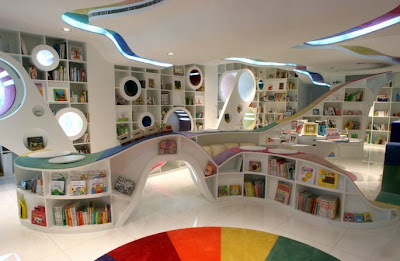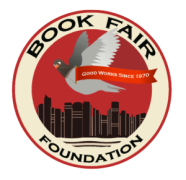Received today via the Ex-Libris email list from Terry Belanger,
University Professor, Honorary Curator of Special Collections, and
Director of the Rare Book School at the University of Virginia. Full
disclosure: Professor Belanger will be teaching the course I am
planning to take at Rare Book School
this summer. Also, USF President Stephen Privett worked at my alma
mater, Santa Clara University, before moving on to USF. I did receive
permission from Professor Belanger to reprint his post to the Ex-Libris
list in its entirety:
From Professor Belanger:
"The following, just in from a source I trust:
'During his tenure at the University of San Francisco (USF),
President Stephen Privett has been devoted in giving all his time and
energy to its benefit. In the current economic crisis, he is tasked
with painfully difficult, thankless, and unpopular decisions: to
identify academic programs to discontinue and assets to sell, if
necessary, to stabilize USF's finances. On Sunday, 10 May 2009, the San
Francisco Chronicle published a story
on the cancellation of USF's M.A. in Theology program amid protest.
Earlier, on April 30th, the lead story in the campus newspaper, The Foghorn,
told of assets identified for possible sale, primarily USF's renowned
rare book collections, but even including the possibility of the Lone
Mountain campus. The story may be accessed here (or search Google for "foghorn rare books").
Faculty and library donors and supporters have been appalled and
dismayed that the Library could be stripped of its collections,
virtually all of which were donated to the Library or purchased with
donated funds. In the last 50 years, under the visionary leadership of
Fr. William Monihan, S.J., Bay Area families and others worldwide have
generously contributed books, manuscripts, artworks and funds to create
the Gleeson Library and its Donohue Rare Book Room which, together,
State Librarian emeritus Kevin Starr has described as "an epicenter of
Jesuit Humanism" and "a library second to none." Donors reasonably
anticipated that their collections might have a permanent and secure
home there.
Unfortunately, President Privett, has not only identified library treasures for sale, he has already quietly and anonymously
started to consign them for sale at auction. He recently stripped from
the Timken-Zinkann Collection, an early founding core collection of the
Library, a series of original woodcuts and engravings - mostly iconic
images of Catholic and Christian tradition - by leading Renaissance
artist and author, Albrecht Durer, in effect destroying the integrity
of the collection. Together with an early, original Rembrandt etching,
the Durer prints were anonymously offered for sale at auction Tuesday
morning, 11 May, at Bonhams, despite a valiant last-minute effort on
the part of faculty and library supporters to persuade Privett to
suspend the sale.
See this link to the Bonhams website for a record of the sales.
In a down market, only the Rembrandt and a few of the Durers sold.
Those of us who support the integrity of the Library's collections,
hope the unsold items may be returned to their home of many years for
the continued benefit of students, researchers and faculty.
According to the Foghorn Online story cited above, Privett insists
that, if the items compiled from the Rare Book Room were ever sold,
they would be "non-book items, duplicate volumes, or single volumes,
not part of a series or collection." As for the Durer collection,
Privett said, "They (the prints) were discovered by accident. We have
an art gallery, not a museum. We didn't have a place for them."
Sadly, one of the Durer engravings sold (for $67,100 including
buyer's premium) is "St. Jerome in His Study," an image which noted
author Stephen Mitchell has described movingly in his writing. St.
Jerome is the patron saint of librarians whose feast day is September
30th. Traditionally, every September his engraving was exhibited in the
Gleeson Library to bring blessings and protection to the Library
itself, to the librarians who selflessly work there, and to all those
who research and patronize it. Whose or what image will now bless and
protect USF's Gleeson Library? Perhaps, come next September, some one
will hang black mourning cloth where once the image of St. Jerome was
displayed.
Ironically, President Privett has stated that money made from the
sale of Rare Book Room items will go towards the renovation of the room
itself. Once collections are compromised and books, manuscripts,
artworks, ephemera and related items have been cannibalized from them,
for what pupose will the Rare Book Room be renovated?
Both history Professor Martin Claussen, claussenm@usfca.edu, and
Gleeson Library Associates Co-President, Walrave Jansen,
wallyj@ix.netcom.com, have written eloquently about saving USF's are
book collections and are actively working to do so. President Privett
has agreed to meet with faculty tomorrow (Thursday 14 May), to discuss
the situation.
President Privett emphasized in the campus newspaper that he was
only making worst case scenario contingency plans. The fact that he had
already quietly and secretly consigned items from the Library for sale
at auction - courageously uncovered and exposed by history Professor
Martin Claussen - belies the contingent nature of his plans.
Contingencies have a way of becoming realities all too quickly!
When one thinks of Gleeson librarians Father William Monihan and D. Steven Corey, and all the collectors and donors who
contributed to make the rare book collections of USF what they are, it is dismal to recognize what is happening today.
In addition to Prof. Claussen, Walrave Jansen, Gleeson Library
Associates Co-President, has been doing remarkable work to attempt to
staunch the bleeding of the Donohue Rare Book Room holdings. One thing
that amazes me is that the University President seems to have taken
over and is attempting to micromanage deaccessioning, something that I
would think should be the responsibility of the Library Dean and
Library staff members.
Should you wish to express yourself to USF President Stephen
Privett, or Library Dean Tyrone Cannon, they can be addressed
respectively at privett@usfca.edu and cannont@usfca.edu.'
I have not yet been able to verify all of the details of this story,
but (for openers) it's clear that the prints were indeed auctioned off.
The most offensive part of this sad tale is that the sales were
conducted surreptitiously.
I think that the first order of business is to alert journalist
friends and colleagues; there's an important story percolating here."
-Terry Belanger
UPDATE: Jeremy has been able to post about this topic with the commentary I wish I had time to write. Click here to read.
UPDATE #2: More commentary from Book Patrol.










